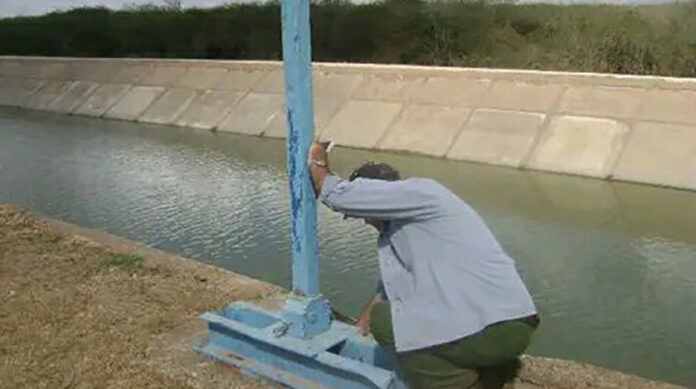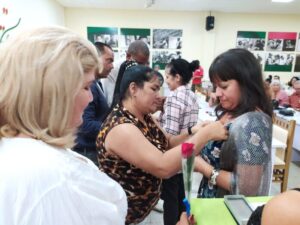In the next few hours, the waters from the Zaza-Ciego de Ávila transfer canal will benefit the first 30 hectares planted with rice belonging to the Limones Palmero agricultural project, in the municipality of Majagua, in the province of Ciego de Ávila.
With the inclusion of these lands, of which some 300 hectares are expected to be exploited for rice and various crops, given the proven fertility of the area, there are three clients (Azcuba, Fisheries and now Agriculture) that benefit from this engineering work, which has 41 kilometers so far and has been in use for seven years.
The members of the Credit and Commerce Cooperatives (CCS) and Agricultural Production Cooperatives (CPA), both called Antonio Palacio, and the CCS Victoria de Girón, released areas covered with marabou near the Zaza-Ciego de Ávila river to take advantage of the liquid that is within reach of their hands and sow food.
Yadier Castillo Gómez, administrator of the CPA, pointed out that the current commitment in this cold season is to cover some 80 hectares with rice, since they will continue conditioning other lands.
The lands -down the canal- are also good for chili peppers, beans, tomatoes, melons, pumpkins, potentialities that we will exploit, since the peasants of Limones Palmero are willing to launch food production, assured Eliober Bello Carbonell, associated with the CCS.
David González Negrín, director of the Maintenance and Hydrometry Base Business Unit, belonging to the Hydraulic Exploitation Company, explained that operators of this entity made the secondary channels – about 18 kilometers – for irrigation, from the delivery points Three, Four, Five, Six and Seven.
Gates were added to these channels, with a depth ranging between 80 centimeters and one meter, to regulate the entry of water to the crops, González Negrín said.
For this first phase of the rice project, 2.9 million cubic meters of water have been allocated from the transfer channel.
The Zaza-Ciego de Ávila helps to stop the saline intrusion wedge in the south of Cuba, receives the volumes of water from the Lebrige, Dignorah and Felicidad dams, in Sancti Spíritus, which can be used through the 15 delivery points designed along its journey.
It starts in the Sur del Jíbaro diversion, in the province of Sancti Spirius, and reaches the vicinity of the rural community El Amparo, in the Avilanian municipality of Venezuela.
Some 60 hectares of sugar cane from the Ramón Domínguez de la Peña Agricultural Production Cooperative and the La Teresa Fingerling Base Business Unit, belonging to the Fishing Company, currently benefit from its waters.
According to predictions of scientists, in the year 2025 around three thousand 500 million people (almost half of the current world population) will suffer problems with water, so the news of the exploitation of this canal is welcome because, apart from economic costs, its use is decisive for food and life itself.






